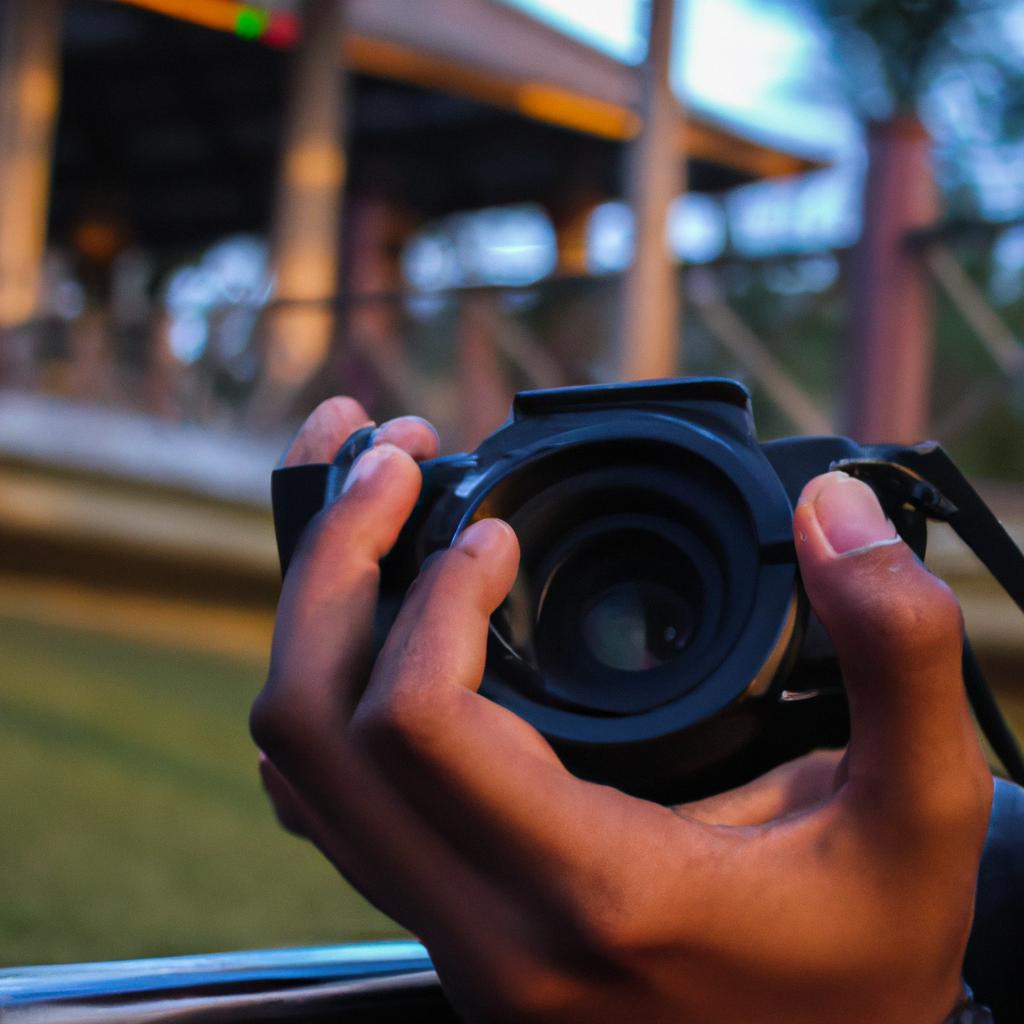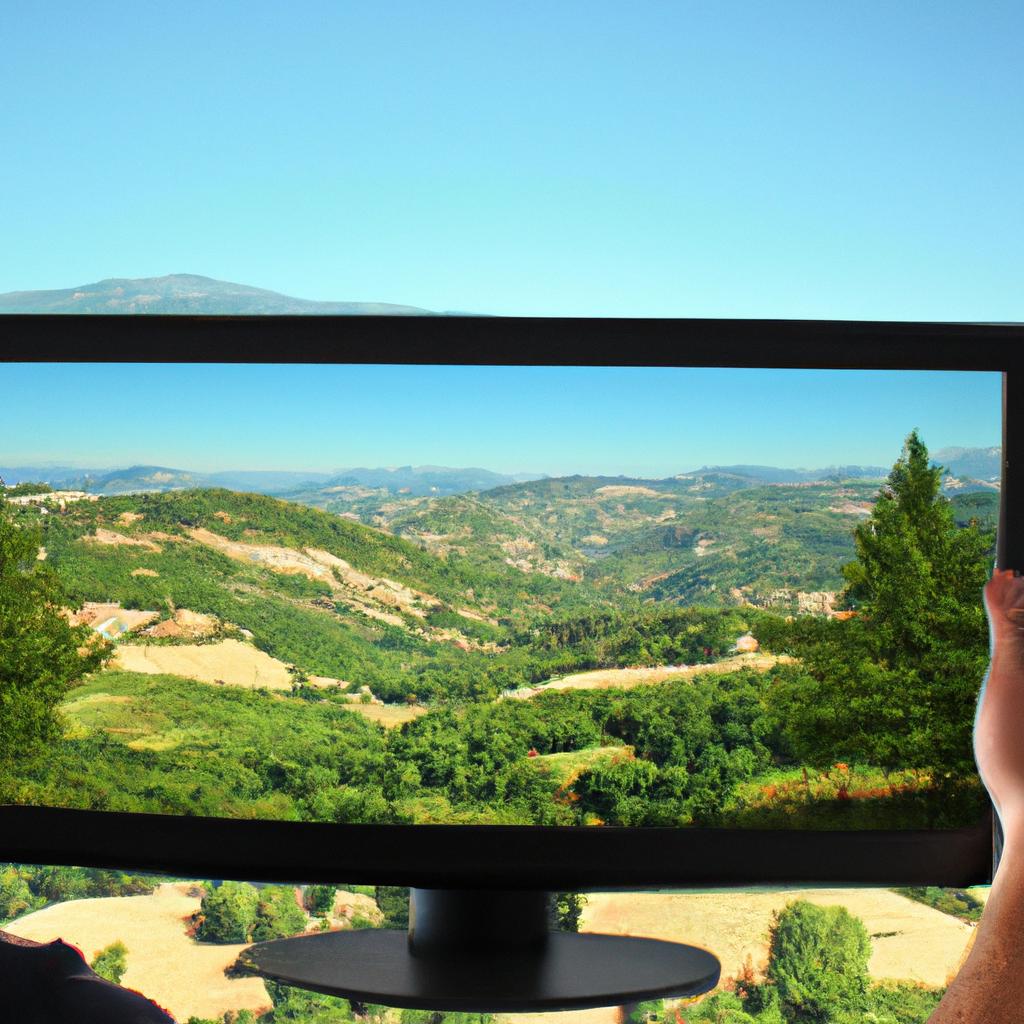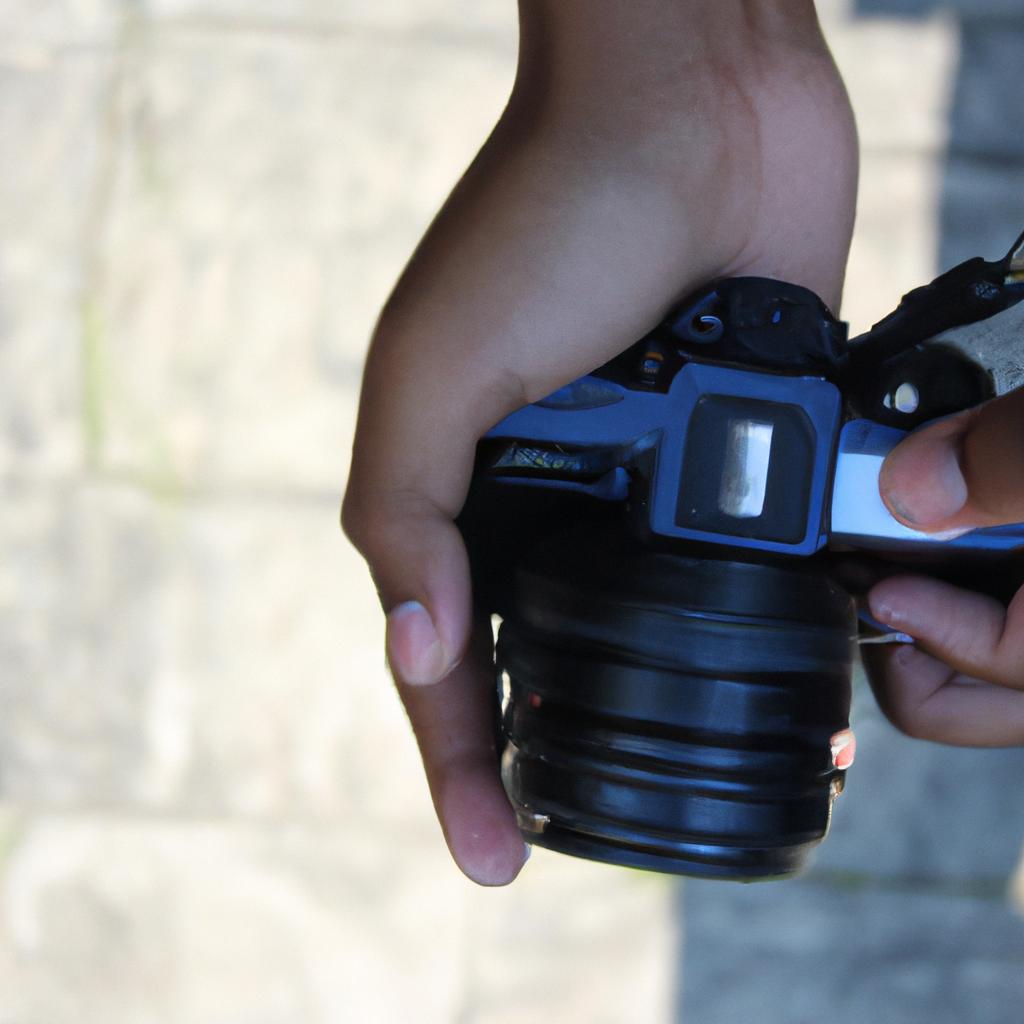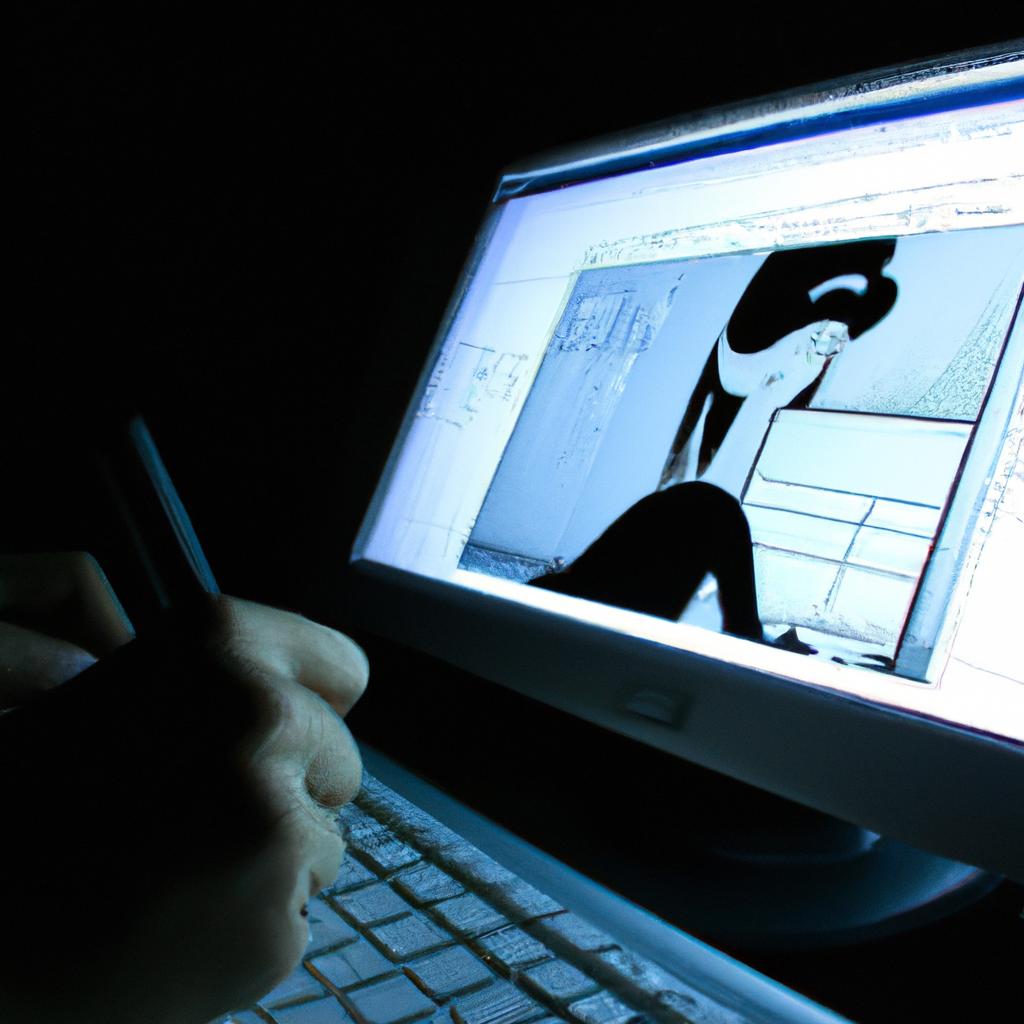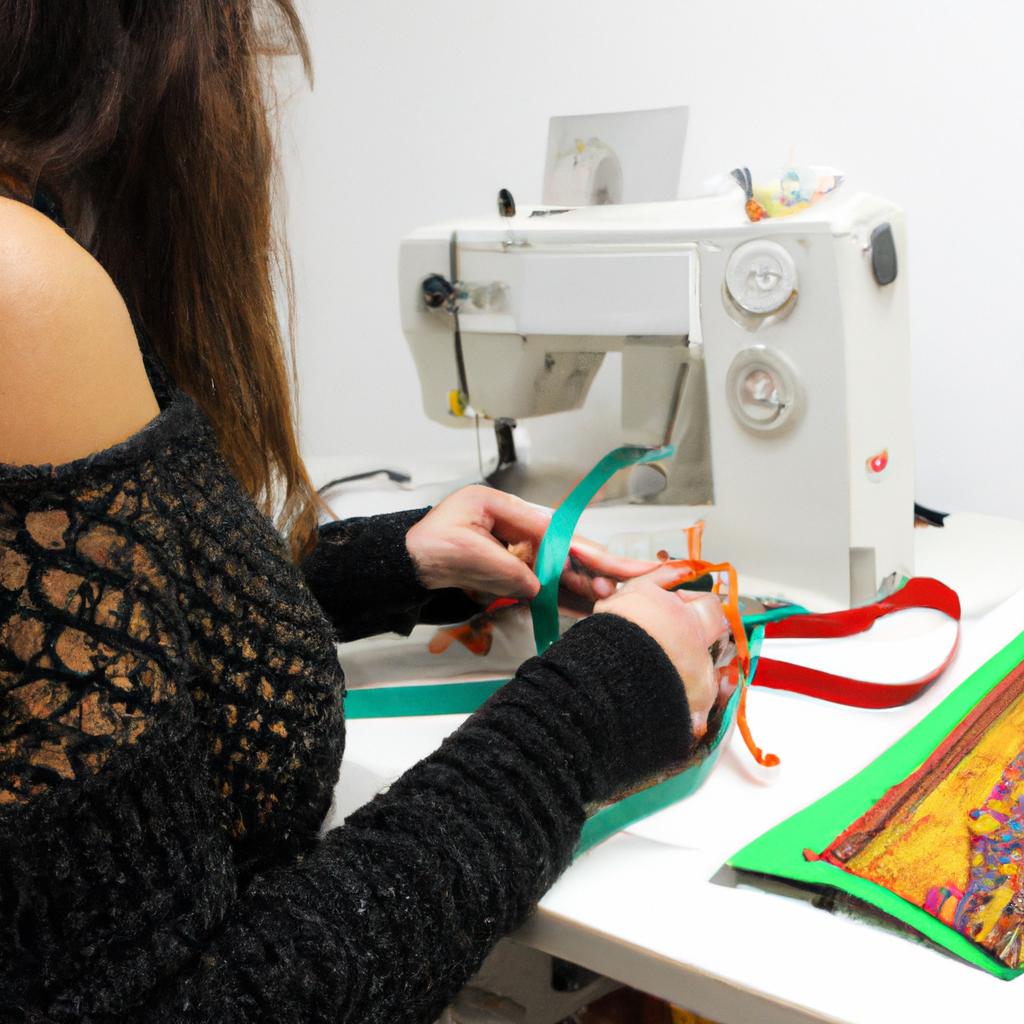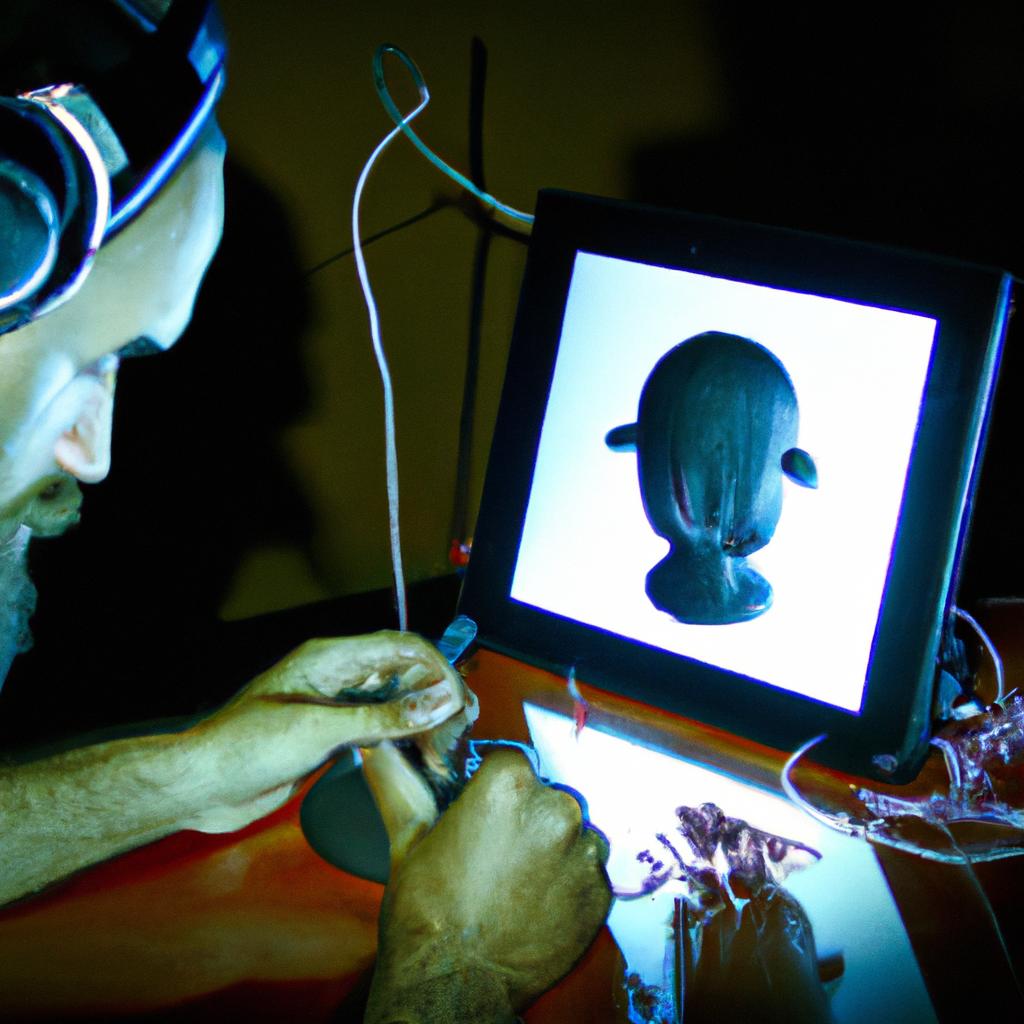Documentary photography has long been recognized as a powerful medium for visual storytelling, capturing the essence of reality and shedding light on untold narratives. This art form has found its way into the realm of television, where it plays a crucial role in conveying compelling stories to audiences around the world. One such example is the critically acclaimed documentary series “Planet Earth,” which takes viewers on an awe-inspiring journey through breathtaking landscapes and showcases the beauty and fragility of our planet’s ecosystems.
The artistry behind documentary photography in television lies not only in its ability to capture raw moments but also in its capacity to evoke emotions and provoke thought. By documenting real-life events, social issues, or cultural phenomena with authenticity and integrity, photographers are able to transport viewers into unfamiliar worlds while simultaneously stimulating empathy and understanding. Through their meticulous composition, use of lighting techniques, and keen eye for detail, these artists transform mere images into poignant visual narratives that resonate deeply with audiences.
In this article, we will delve into the captivating world of documentary photography within television production. We will explore how skilled photographers harness their artistic vision to create visually stunning and emotionally impactful content that captures both the imagination and conscience of viewers. By examining various case studies from renowned documentaries, we aim to shed light on the profound impact that documentary photography has on shaping public perception and inspiring positive change.
One notable case study is the documentary series “Human,” directed by Yann Arthus-Bertrand. This groundbreaking project features interviews with individuals from different corners of the globe, highlighting their personal stories and experiences. What sets this documentary apart is its use of intimate portraits, capturing the essence of each person’s emotions and allowing viewers to connect on a deeply human level. The photographs in “Human” not only serve as visual documentation but also evoke empathy and promote understanding across cultural divides.
Another compelling example is the documentary “The Salt of the Earth,” co-directed by Wim Wenders and Juliano Ribeiro Salgado. This film showcases the extraordinary work of Sebastião Salgado, a renowned Brazilian photographer known for his powerful black-and-white images depicting social issues and environmental crises. Through his lens, Salgado exposes the devastating consequences of deforestation, genocide, and poverty while simultaneously celebrating humanity’s resilience. His photographs transcend language barriers, conveying universal messages that resonate with audiences worldwide.
Documentary photography within television production extends beyond capturing still images; it also involves incorporating motion through techniques such as timelapse, slow motion, or aerial footage. These innovative approaches add depth and dynamism to the storytelling process, creating a multisensory experience for viewers. Additionally, advancements in technology have allowed photographers to venture into previously inaccessible locations, providing unprecedented perspectives on our world’s natural wonders or hidden communities.
In conclusion, documentary photography in television holds immense power to inform, educate, and inspire change. By leveraging their artistic vision and technical skills, photographers are able to craft visually stunning narratives that engage viewers emotionally and intellectually. Through their unique ability to document reality with authenticity and integrity, these artists play a vital role in shedding light on untold stories and promoting empathy on a global scale. Whether it be through captivating portraits or breathtaking landscapes, documentary photographers continue to shape our understanding of the world and evoke a sense of responsibility towards its preservation.
The Evolution of Documentary Television
In recent years, documentary television has experienced a significant evolution in both its content and presentation. One notable example is the groundbreaking series “Planet Earth,” which captivated audiences with its stunning cinematography and immersive storytelling. This nature documentary took viewers on an extraordinary journey around the world, showcasing diverse ecosystems and wildlife in breathtaking detail. Through this lens, it became clear that documentary photography plays a crucial role in shaping the visual narrative of television.
To understand the evolution of documentary television, we must examine how advancements in technology have revolutionized the field. The advent of high-definition cameras and sophisticated editing software has allowed filmmakers to capture scenes with remarkable clarity and precision. This technological progress enables them to immerse viewers into the heart of their subject matter, creating an emotional connection between audience and story.
Moreover, documentary photographers have embraced innovative techniques to enhance their storytelling abilities. They utilize various shooting styles such as aerial shots, time-lapse sequences, and slow-motion footage to add depth and impact to their narratives. By employing these creative approaches, documentarians can transport viewers into worlds they may never otherwise experience.
As visual storytelling continues to evolve within the realm of documentary television, it elicits profound emotional responses from audiences worldwide. The power lies not only in capturing captivating visuals but also conveying meaningful stories that resonate deeply with viewers’ hearts and minds. To illustrate this point further:
- A photograph depicting a mother lioness nurturing her cubs evokes feelings of warmth, love, and protection.
- An image showing firefighters battling towering flames ignites emotions of bravery, sacrifice, and resilience.
- A photograph documenting refugees fleeing war-torn regions stirs empathy for those who face adversity unimaginable to many.
- An image capturing the vibrant colors of a bustling market showcases diversity, cultural richness, and human connection.
These examples demonstrate how images captured through documentary photography possess an intrinsic ability to evoke powerful emotions within us all.
Looking ahead, the impact of visual storytelling in documentary television will continue to shape our understanding of the world. In the subsequent section, we explore how this artistry influences our perspectives and drives social change, highlighting its profound societal implications.
The Impact of Visual Storytelling
Documentary television has come a long way since its inception, continually evolving and adapting to the changing times. One notable example of this evolution is the rise of visual storytelling within documentary programming. With advancements in technology and an increasing demand for captivating content, filmmakers have embraced the artistry behind their craft, utilizing photography techniques to enhance the narrative experience.
Consider a hypothetical case study showcasing how visually compelling imagery can contribute to the impact of documentary storytelling. In a nature-focused documentary about the endangered wildlife of Madagascar, close-up shots capturing intricate details of various species could evoke empathy and foster a deeper connection between viewers and the subject matter. By employing shallow depth of field or macrophotography techniques, these intimate glimpses into the lives of animals would create moments that resonate with audiences on an emotional level.
The incorporation of powerful visuals in documentary filmmaking can be achieved through several key strategies:
- Composition: Thoughtful framing and placement of subjects within each shot helps guide viewers’ attention towards specific elements crucial to the narrative.
- Lighting: Effective use of lighting techniques such as chiaroscuro (strong contrast between light and dark) can elicit feelings of drama or mystery, enhancing the overall mood and atmosphere.
- Color grading: Manipulating colors during post-production allows filmmakers to convey different emotions or highlight particular themes within their documentaries.
- Visual symbolism: The deliberate inclusion of symbolic objects or imagery can add layers of meaning to a scene, subtly conveying concepts or ideas without explicit explanation.
To further illustrate the significance of visual storytelling in documentaries, let us explore some examples using bullet points:
- A breathtaking aerial shot sweeping over lush green valleys immerses viewers in the majestic beauty of untouched landscapes.
- Intimate close-ups reveal every wrinkle on an elderly woman’s face, inviting us into her world filled with wisdom and resilience.
- Slow-motion footage captures fleeting moments – droplets cascading from leaves after rainfall – emphasizing both fragility and vitality.
- A stark black and white image of a protestor standing alone against a backdrop of chaos symbolizes the power of individual courage in the face of adversity.
In addition to these strategies, documentary filmmakers often employ various photography techniques to enhance storytelling. In the subsequent section on “Exploring Documentary Photography Techniques,” we will delve deeper into specific methods utilized by professionals to capture compelling visuals that engage and captivate audiences throughout their viewing experience. By understanding the artistry behind visual storytelling, viewers can gain a greater appreciation for the impact documentaries can have on shaping our perceptions and understanding of the world around us.
Exploring Documentary Photography Techniques
Documentary Photography: The Artistry Behind Television’s Visual Storytelling
Transitioning from the impact of visual storytelling, we now delve into the techniques employed in documentary photography that contribute to its unique power. By exploring these methods, we gain insight into how photographers capture authentic moments and convey compelling narratives through their lens.
To illustrate this further, let us consider a hypothetical case study involving a documentary photographer documenting the lives of refugees. In one photograph, the subject is captured standing against a backdrop of dilapidated tents in a refugee camp, highlighting the harsh living conditions they endure. This image evokes empathy by presenting viewers with a stark visual representation of human resilience amidst adversity.
The artistry behind documentary photography lies not only in capturing powerful images but also in employing various techniques to enhance their impact. Here are some commonly used approaches:
- Composition: Photographers carefully frame their shots to create visually appealing and meaningful compositions that draw attention to specific elements within the frame.
- Lighting: Manipulating light can evoke different moods and emphasize certain aspects of the scene, enhancing emotional resonance.
- Perspective: Choosing angles and viewpoints allows photographers to present subjects from unique perspectives, offering fresh insights or emphasizing certain details.
- Timing: Capturing decisive moments requires anticipation and patience, as photographers aim to freeze significant actions or expressions that encapsulate the essence of a situation.
These techniques work hand in hand to bring authenticity and emotion to documentary photographs. To demonstrate this further, consider the following table showcasing examples of how each technique contributes to conveying distinct emotions:
| Technique | Emotion Conveyed |
|---|---|
| Composition | Isolation |
| Lighting | Hope |
| Perspective | Vulnerability |
| Timing | Resilience |
Through deliberate incorporation of such techniques, photographers skillfully craft images that engage viewers on both an intellectual and emotional level. By capturing authentic moments and presenting them in a visually compelling manner, documentary photography enables audiences to connect with the subjects and stories being portrayed.
Transitioning into the subsequent section on “Capturing Authentic Moments on Camera,” we will explore how photographers navigate ethical considerations while striving to capture genuine portrayals of their subjects’ experiences. Through an examination of this aspect, we gain insight into the challenges faced by documentary photographers as they seek to maintain integrity and respect for their subjects while telling powerful visual stories.
Capturing Authentic Moments on Camera
Exploring Documentary Photography Techniques: The Key to Visual Storytelling
Taking inspiration from the world of documentary photography, television producers and directors have honed their skills in capturing authentic moments that resonate with viewers. By utilizing various techniques, they are able to visually convey powerful narratives and evoke emotional responses. This section will delve into the artistry behind these techniques, showcasing how they enhance storytelling on television.
Imagine a scene where a group of children play happily in a run-down neighborhood. Through the lens of a skilled documentary photographer, this seemingly ordinary moment can be transformed into an extraordinary visual story. By employing techniques such as framing, composition, lighting, and perspective, the photographer can capture the essence of innocence amidst adversity. Each element carefully considered and executed brings depth and meaning to the image.
To evoke an emotional response from the audience, television productions often employ specific techniques borrowed from documentary photography:
-Selective focus: By focusing on key elements within a frame while blurring out others, filmmakers direct viewers’ attention to important details or emotions.
-High contrast: Employing stark contrasts between light and dark areas creates intense visuals that heighten drama or emphasize certain aspects of a scene.
-Candid shots: Capturing unposed moments allows for genuine expressions and reactions, fostering a sense of authenticity.
-Framing through objects: Utilizing foreground elements like windows or doorways not only adds depth but also frames subjects within the context of their environment.
This table illustrates how these techniques contribute to different emotional responses in viewers:
| Technique | Emotional Response |
|---|---|
| Selective focus | Intimacy |
| High contrast | Tension |
| Candid shots | Empathy |
| Framing through objects | Atmosphere |
By skillfully implementing these techniques, television producers harness the power of documentary photography to create captivating visual stories that stay with viewers long after they’ve watched them unfold on screen.
In the subsequent section, we will explore the vital role documentary photographers play in television productions. Their expertise and unique perspective contribute to shaping narratives that engage audiences on a profound level.
The Role of Documentary Photographers in Television Productions
Having explored the significance of capturing authentic moments on camera, we now delve into the artistic approach that documentary photographers employ in television productions. By combining technical skill with a creative vision, these photographers contribute to the visual storytelling process, adding depth and emotion to the narratives presented on screen.
One notable example of an artistic approach in documentary photography is the use of composition techniques to evoke specific emotions. For instance, by employing the rule of thirds, photographers can create visually compelling images that draw viewers’ attention to key elements within a frame. This technique allows for a more dynamic and balanced composition, enhancing the overall impact of the image.
In addition to composition techniques, documentary photographers often utilize various visual elements such as light and color to convey mood and atmosphere. The strategic use of lighting can highlight important subjects or create dramatic effects, while color palettes can evoke specific emotions in viewers. By carefully considering these factors during production, photographers not only capture reality but also interpret it through their lens.
To further emphasize the artistry behind documentary photography in television productions, consider the following bullet points:
- Documenting real-life stories through a creative lens
- Infusing personal style and perspective into visuals
- Balancing authenticity with aesthetic appeal
- Collaborating with directors and producers to enhance storytelling
| Professional Skills | Creative Vision | Technical Expertise |
|---|---|---|
| Composition Techniques | Visual Storytelling | Lighting Techniques |
| Color Theory | Emotive Imagery | Post-processing Knowledge |
| Moment Capturing | Authenticity | Equipment Proficiency |
By embracing both creativity and technical expertise, documentary photographers bring a unique dimension to television’s visual storytelling landscape. Through deliberate choices in composition, lighting, color, and collaboration with other creatives involved in production, they shape how audiences experience and connect with the stories being told.
As we have explored the artistic approach of documentary photographers, it becomes evident that their work is not only about capturing moments but also about crafting visual narratives. The power of these visual narratives will be further examined in the next section.
The Power of Visual Narratives
As television productions continue to rely on powerful visual narratives, the role of documentary photographers has evolved significantly. These skilled individuals play a crucial part in capturing authentic moments that convey emotion and tell compelling stories. By integrating their artistry into the medium of television, documentary photographers enhance the viewers’ experience by providing a unique perspective.
One striking example illustrating this evolution is the critically acclaimed documentary series “Planet Earth.” In this groundbreaking production, renowned photographer Andrew Zuckerman collaborated with filmmakers to capture astonishing images of wildlife and nature. The photographs served as essential storytelling elements, effectively engaging audiences worldwide while highlighting the beauty and vulnerability of our planet.
To better understand how documentary photographers contribute to television productions, let us examine four key ways they enhance visual storytelling:
- Immersion: Through their lens, documentary photographers transport viewers directly into the heart of the story, creating an immersive experience that connects them emotionally with the subject matter.
- Authenticity: By focusing on real-life situations and genuine expressions, these photographers bring authenticity to television programs, fostering a deeper connection between viewers and the portrayed events or characters.
- Visual Impact: With their trained eye for composition and lighting, documentary photographers create visually arresting images that leave a lasting impression on audiences.
- Narrative Enhancements: Documenting significant moments within a storyline allows these professionals to add depth and richness to narrative arcs, enabling viewers to fully grasp complex themes or concepts.
Table: Key Contributions of Documentary Photographers in Television Productions
| Contribution | Description |
|---|---|
| Immersion | Transporting viewers directly into the heart of the story |
| Authenticity | Bringing real-life situations and genuine expressions to foster emotional connections |
| Visual Impact | Creating visually arresting images through expert composition and lighting |
| Narrative Enhancements | Adding depth and richness to narrative arcs by documenting significant moments |
By embracing the artistry of documentary photography, television productions can tap into the power of visual storytelling. Through their unique contributions, documentary photographers enhance immersion, authenticity, visual impact, and narrative depth in order to captivate audiences on a profound level. As this collaboration continues to evolve, we can expect even more extraordinary stories brought to life through the lens of these talented individuals.

